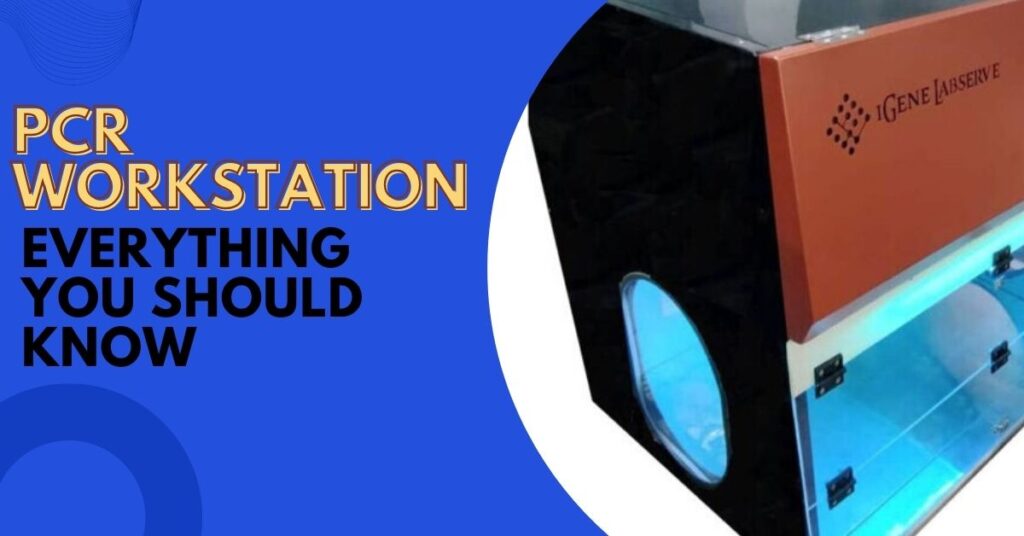A PCR workstation or PCR hoods are used in genetic and molecular biology labs to prevent cross-contamination between samples. It is a workspace enclosed on three sides. One of the main features of a PCR workstation is that they have no circulation. This attribute helps to combat contamination. PCR workstations can be of several types, and they may come with a variety of features. More often, these features come in the form of a HEPA filter, a timer for UV sterilization, etc. Before purchasing a PCR workstation, you need to consider all these aspects. After all, the best decision will be to buy the one that meets all ends.
Concept of a PCR workstation
PCR is the acronym for Polymerase Chain Reaction. Kary Mullis, a biochemist, developed this method in the 1980s. His objective was to multiply or amplify a certain section of a DNA strand. There are various applications of PCR, ranging from environmental study to medicine to crime scene investigation.
PCR is also referred to as “molecular photocopying.” The PCR is an inexpensive and fast technique used to amplify and copy small DNA segments. A significant amount of a DNA sample is necessary for genetic and molecular analyses. Without PCR amplification, studying isolated pieces of DNA is nearly impossible.
Components in a PCR workstation
PCR workstations are enclosed in three-sided boxes. There is a sash or panel on the front that allows the operator to access the workspace. A PCR workstation uses High-Efficiency Particulate Air (HEPA) filters to eliminate airborne contaminants in the research lab. Besides this function, the HEPA filters direct the clean air down over the work area. Generally, HEPA filters have a 95% efficiency rating for collecting 0.2-0.5 micron particles, thereby, enforcing a secured environment for samples within the workspace.
Types of PCR workstation
There are two types of PCR workstations as listed below:
- Laminar Flow: This PCR workspace type circulates and filters air constantly in parallel layers. Using the HEPA filtration technique, a PCR Laminar Flow Cabinet combines a clean air environment with timed UV light sterilization for maximum protection from sample contamination. If you raise the bi-fold sash, it will turn off the UV light and enables the blower.
- Dead Air: The dead Air PCR workstation promotes circulation-free air. Dead Air PCR workstation unit comes with a UV-light timer that allows sterilization between amplifications. The presence of a safety interlock switch prevents exposure to UV light when you raise the sash.
Features of PCR workstation
The prime features of a PCR workstation are listed below:
- Provides sterilized work zone for aseptic techniques
- Energy-saving LED lighting
- High-efficiency EC blower
- 360-degree visibility with UV absorbing polycarbonate construction
- Vertical laminar workflow
- Equipped with UV lamp for decontamination
Why should you use a PCR workstation?
A clean environment is required since cross-contamination during PCR operation can generate inaccurate results. By using a PCR workstation, you can prevent cross-contamination by keeping all the air contaminants away from the samples.
When should you use a PCR workstation?
There is a popular view that PCR workstations are used for medical applications. It’s partially true. They are perfect for work that demands particle-free air and that aims to protect the process being executed. Some possibilities encompass assembly of electronic devices; media plate preparation, plant tissue cultures, and mycology.
Applications of PCR
There are multiple uses of a PCR workstation as listed below:
- The modification of DNA fragments
- The amplification of gene fragments as an alternative to cloning
- DNA assessment of archeological specimens
- The sensitive identification of pathogenic microorganisms
- The detection of mutations pertaining to inherited diseases, tissue typing, or malignant transformation
- The evaluation of genetic markers for crime scenes and forensic applications
- The study of gene expression
After amplification, the DNA generated by PCR can be implemented in several laboratory procedures. The PCR also comes in handy in several clinical and laboratory techniques, encompassing DNA fingerprinting, identification of genetic disorders, and detection of viruses and bacteria.
As you can understand, the main function of a PCR workstation is to protect the samples against contamination during the amplification and manipulation of DNA and RNA. Minimizing contamination helps to deliver accurate results. Hence, PCR hoods and cabinets are integral to the genomics and molecular biology lab.
Are you looking for an excellent PCR workstation to meet all your ends? If you feel so, your search ends with https://www.igenels.com/. Here, you get access to high-quality PCR machines at the best market prices that will meet your research requirements.

